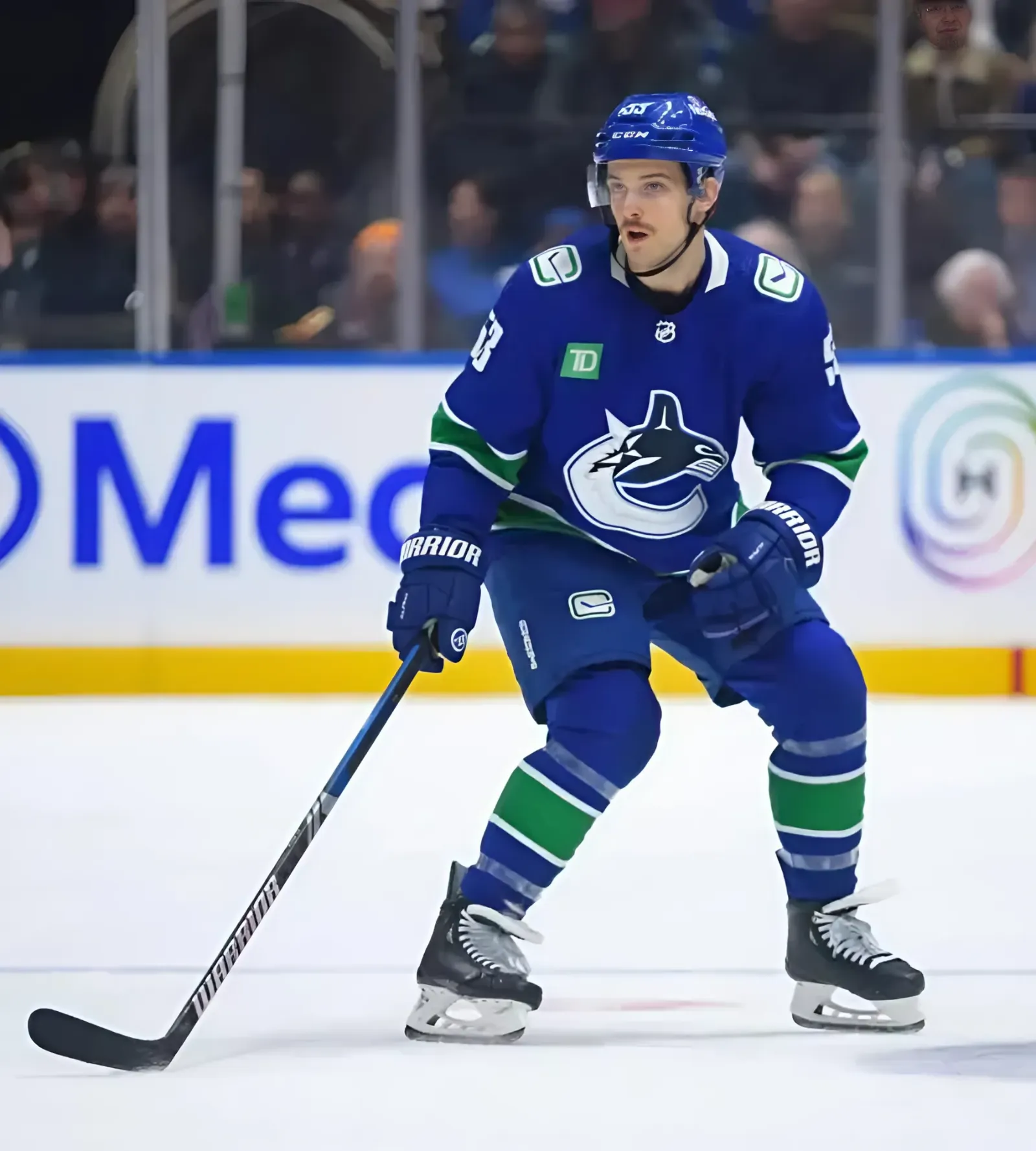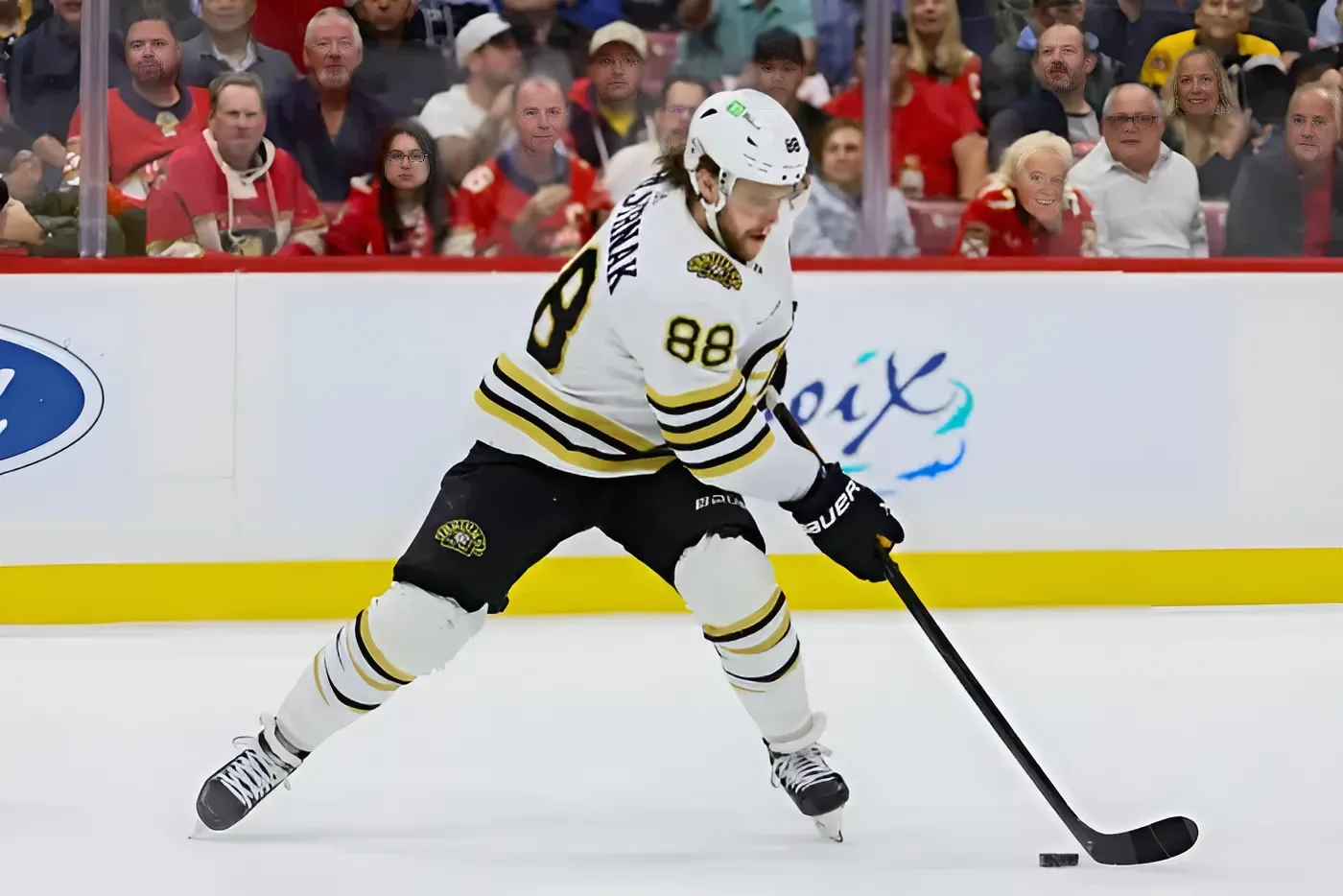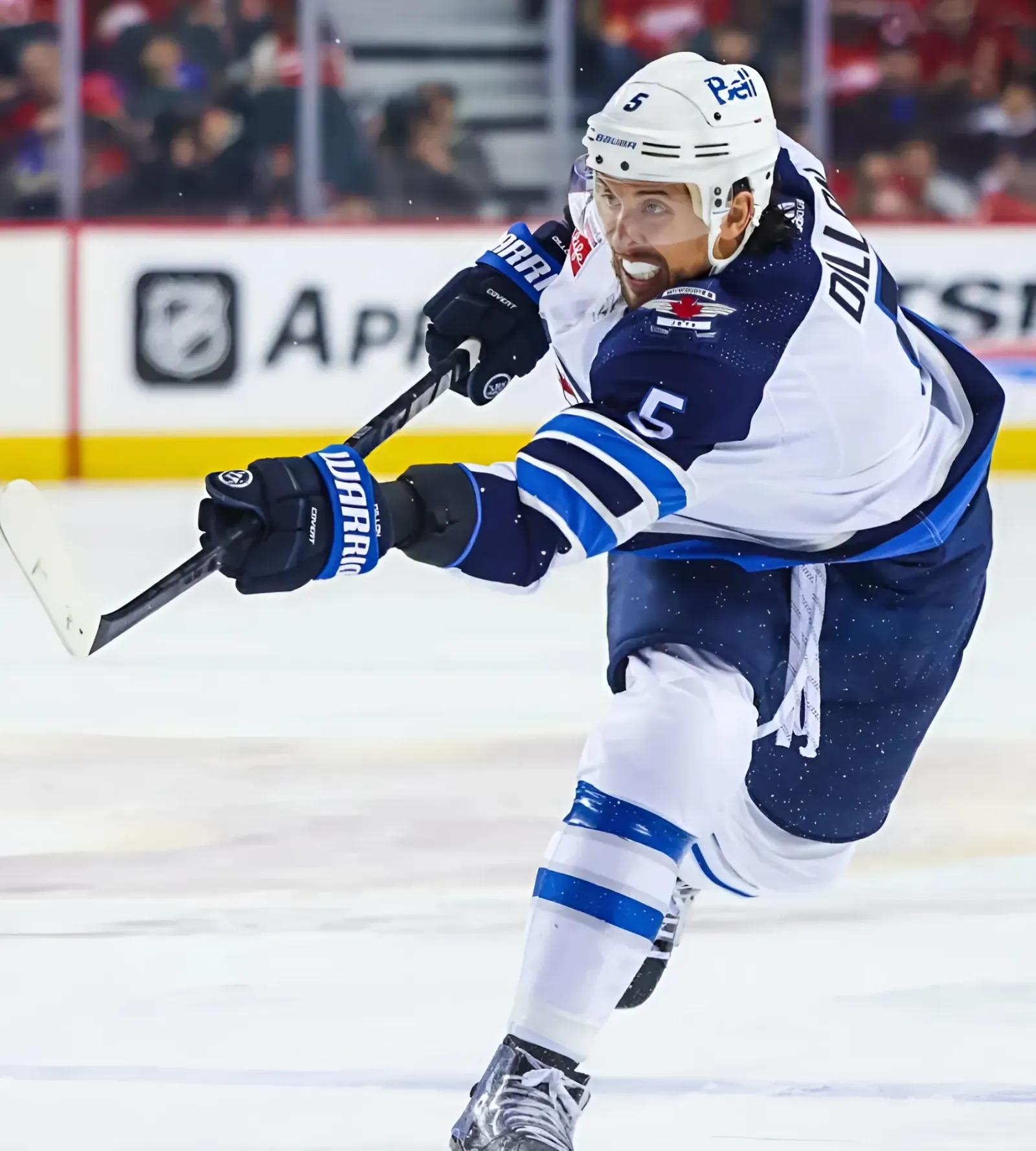Anytime a team has a busy Free Agent Frenzy, it’s sure to be a mix of big, medium, and small signings.
And with GM Patrik Allvin and Co. of the Vancouver Canucks making six signings in the first few hours of July 1, 2024 despite limited cap space, not everyone signed was going to be a big name.
Derek Forbort is only considered a big name by those hockey fans who love to make Simpsons reference. But that doesn’t mean he doesn’t also check off some boxes for the Canucks and their various 2024/25 needs.
The Canucks UFA Checklist continues.
Hindsight-Free Analysis
In this series, where possible, we’ll recount what we said about this player before the Canucks signed them. Unfortunately, that’s not possible for Forbort, because we didn’t write about him in our article on potential LHD additions.
Which, to be perfectly honest, was mostly a result of the potential awkwardness in bringing in Forbort after he famously feuded with Nils Höglander…
…and then was feuded upon by Zack MacEwen in retaliation.
But rambunctiousness is only one of the things the Canucks are getting in Forbort.
Size at LHD: Check
With Ian Cole (6’1”, 225lb) and Nikita Zadorov (6’6”, 248lb) both departing via free agency, the Canucks really needed to bring back some size at LHD – especially with the NHL continually trending toward bigger blueliners being more effective come the postseason, and the Canucks firmly aimed at a playoff berth.
Forbort checks in at 6’4”, 216lb, and as Höglander discovered, Forbort might not be the most effective at using that size, but it’s certainly not for lack of willingness. He’s not a banger, but he is a presence.
With Quinn Hughes leading the charge on the left side, there’s an added impetus for the players behind him to be large. With a 6’4” Forbort and a 6’5” Carson Soucy, the Canucks have at least ensured some wingspan-based coverage.
A Dedicated Shot-Blocker: Check
If Cole was great for one thing last year, it was blocking shots, and it’s a trait that lent him plenty of credit for the Canucks’ first round victory over the Nashville Predators (until the pucks started bouncing off of Cole and into the Canucks’ net in Round Two and that credit went away.)
Forbort can absolutely fill the niche of a dedicated shot-blocker.
Last year, Cole blocked 166 shots in the regular season at a rate of 6.83 per 60.
Forbort blocked 65 shots in just 35 games played, and at a rate of 6.26 per 60.
If that’s the primary thing that he use his sizeable frame for, it will at least be the thing that the Canucks need most from it.
A Key Penalty Killer: Check
The Canucks need to get better on the PK, and they just lost a key piece there in Cole.
The Bruins had the seventh-best penalty kill in the league last year at 82.5% and, when healthy, Forbort was a leading member of it.
Forbort’s 3:01 of average shorthanded ice-time per game was second on the Bruins to Brandon Carlo, who often formed a top-unit pairing with Forbort and skated against opposing PP1 units.
For the Canucks to be able to essentially swap Cole out for someone who played just as large a role on a much better penalty kill has to be seen as a win.
The Kinds of Problems that the Coaching Staff Can Fix: Check
If you read around the various forums and message boards, you get the sense that Forbort wasn’t exactly the Bruins’ most popular member. A refrain that is repeated often is that Forbort is prone to the occasional brutal giveaway, and while that reputation isn’t exactly backed up by stats – Forbort’s 1.05 giveaways-per-60 ranked 20th overall on the Bruins this past season – it’s probably a result of the size of his gaffes more so than the frequency.
But, hey, you know who else used to have a major problem with giant-sized gaffes? Tyler Myers. And you know who got a lot better at minimizing those after a bit of tutelage from Rick Tocchet and Co.?
Tyler Myers.
And if Tocchet and his coaching staff can fix Myers’ propensity for mind-boggling turnovers, it stands to reason they can do the same for Forbort. It’s nice when a player’s most obvious flaw is one that the coaches have a proven track record at addressing, if nothing else.
Chance-Suppression: Check
Forbort is what the fancy stats folks refer to as a “strong chance suppressor.”
The Canucks already have a lot of puck-moving and -skating talent on their blueline in Hughes, Filip Hronek, and Myers, and while they could always use more, all they really need from the rest of the blueline is low-event hockey.
Forbort can do low-event hockey.
He had a 52.68% xG at 5-on-5 in 2023/24, along with a 53.76% control of high-danger chances.
These were the best defensive results of any Bruins defender, and while there’s plenty to be said about quality of competition there, it shows that Forbort is, at the very least, good at keeping his own minutes clean, tidy, and opposing-chance-free.
Ability to Eat Minutes and Occasionally Step Up the Lineup: Check
Forbort has spent his time in Boston battling injuries and battling names like Hampus Lindholm, Dmitry Orlov, and Matt Grzelcyk for ice-time, among others.
If he can stay healthy, he has an opportunity to do more in Vancouver, along with a track record that suggests he can.
The Canucks are currently slated to have both Soucy and Myers in their top-four. If that’s the case, then the so-called bottom-pairing is going to be asked to take on more minutes than the average bottom-pairing might.
Hughes is going to play about 23-24 minutes a night. That leaves about 36 for Soucy and Forbort to split up amongst themselves.
Forbort skated an average of between 17:43 and 18:06 in his three seasons with the Bruins, which is about where the Canucks might need him. But he’s only three years removed from skating an average of 20:44 a night for the Winnipeg Jets as a full-fledged member of their top-four, so Forbort can also step up in case of injury or shuffling as needed. His quality of competition needs to be watched carefully, but he can thrive if it is.
From HockeyViz.com
So long as expectations are kept reasonable, Forbort looks like someone who can handle what the Canucks are going to throw at him.
Cost-Effectiveness: Check
Throughout all of this, we’ve sort of pitched Forbort as a Cole replacement, and all indicators are that he’s a pretty good replacement.
If he’s a downgrade at all, he’s not much of one.
Here’s where those aforementioned injury troubles become a potential benefit. They no doubt suppressed Forbort’s bargaining power this offseason, and that’s why he signed at less than half the rate that Cole did with Utah (One year, $3.1 mil AAV).
With new contracts to Elias Pettersson and Hronek kicking in this season, and an increased amount of dead cap, the Canucks needed a bargain or two to fill out the lineup.
Getting Forbort for just double the minimum NHL salary goes a long way. All he needs to do is stay healthy enough to play as much or more as Cole did last year, and that would be enough to call the swap a net-positive, if not a direct upgrade.



